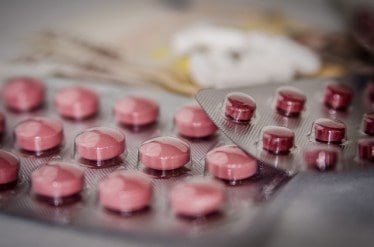Indian Pharmacopoeia Commission (IPC) has recently issued a drug safety alert for doctors and patients about the use of the commonly used painkiller mefenamic acid, popularly sold under the brand name Meftal.
The Pharma standard body in its preliminary analysis of Adverse Drug Reactions (ADRs) from the PvPI database revealed that Meftal can lead to Drug Reactions with Eosinophilia and Systemic Symptoms (DRESS) Syndrome.
According to Dr. Dr Tushar Tayal, Lead Consultant, Department of Internal Medicine, CK Birla Hospital, Gurugram, this syndrome causes a diverse array of clinical symptoms, anywhere from 2 to 8 weeks after initiating the offending drug.
“Antiepileptic medications, such as phenytoin and Phenobarbital, are thought to be the predominant cause of DRESS syndrome although NSAIDS have also been implicated. NSAID’s include painkiller such as Mefenamic acid, naproxen, Brufen etc.,” Dr. Tayal told Financial Express.com.
The drug is indicated for the treatment of rheumatoid arthritis, osteoarthritis, dysmenorrhoea, mild to moderate pain, inflammation, fever, dental pain.
“Healthcare Professionals, Patients/Consumers are advised to closely monitor the possibility of the above ADR associated with the use of above suspected drug. If, such reaction is encountered, please report to the NCC-PvPI, IPC by filling of Suspected Adverse Drug Reactions Reporting Form/Medicines Side Effect Reporting Form for Consumer…,” the body said in a statement.
The drug is widely used by consumers for relieving menstrual pains, headaches, and muscle and joint pain. Moreover, the drug is also consumed by children in case of high fever.
Blue Cross Laboratories’ Meftal, Mankind Pharma’s Mefkind P, Pfizer’s Ponstan, Serum Institute’s Mefanorm and Dr Reddy’s Ibuclin P are some of top products in the category.
What is DRESS Syndrome?
Drug Reactions with Eosinophilia and Systemic Symptoms (DRESS) Syndrome is a type of drug allergy that can occur as a reaction to a large variety of medications.
According to the World Allergy Organization Journal (WAOJ), the syndrome clinically manifests with fever, facial edema, lymphadenopathy, a morbilliform rash, and organ involvement.
Experts maintain that although some drugs are more commonly associated with DRESS than others, almost any drug could cause DRESS. Antibiotics, allopurinol (a medication for gout) and medications used to treat seizures are the most common drugs involved with DRESS.
According to the American Academy of Allergy, Asthma and Immunology, symptoms of DRESS will begin about two to six weeks after the patient has started the medication, so immediate symptoms are not seen in DRESS.
It is noteworthy that medicines that have been taken for more than three months are unlikely to be the cause of the DRESS reaction.
“It is impossible to predict who may develop DRESS syndrome, hence it is advisable to avoid any kind of OTC pain killer unless absolutely necessary and take it under the supervision of your treating physician. If any untoward side effects are seen, please report to your doctor immediately,” Dr. Tayal told Financial Express.com.
What are the symptoms of DRESS Syndrome?
Patients diagnosed with DRESS syndrome typically present with a rash, fever, and eosinophilia but can have a variety of symptoms including liver, lung, or kidney involvement.
“DRESS syndrome should be suspected if a diffuse rash erupts and is accompanied by fever, facial edema, and enlarged lymph two to six weeks after starting a new high-risk medication,” American Osteopathic College of Dermatology states.
How to treat DRESS Syndrome?
The most important step to treat DRESS Syndrome is to stop the medication involved in the reaction, and sometimes, no further treatment is needed. According to American Academy of Allergy, Asthma and Immunology, topical steroids can be given to treat the rash. It certain cases, further treatment is needed to protect the organs from damage, such as with steroids, which can be given either intravenously or orally.
“Treatment with steroids can be needed for weeks or even months, and lab work is monitored carefully during this time. The average time to recovery is six to nine weeks. Long term, most patients do well, although some patients can go on to develop autoimmune diseases so additional monitoring should be considered,” it added.
